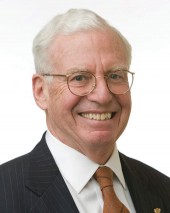The treasure chest of core commercial real estate assets, the American city, is undergoing transformation of sorts. The demographic dents and behavior burps are more dramatic than before. The technology cycles are shorter and more disruptive. The Counselors of Real Estate and the Royal Institute of Chartered Surveyors joined with Stanford University to meet in Palo Alto March 30 to April 1 to reflect and project the Global City. International members of the Counselors and London-based Surveyors and Stanford faculty were joined by international urbanists. This Symposium was about your city and the future context in which you will approach solutions to challenges in your community. Below are a few of my reflections on the symposium which appeared in May in The Counselor.
Against a backdrop of resonating data and conclusions, speakers and panels at the Symposium on Global Cities in an Era of Change described a transforming urban environment with challenges and hope for the not-so distant future. Tomorrow is today. Global decline in birth rates are expected to continue established downward trends. Dramatic decline in automobile ownership and driver licensure in the U.S. is occurring and will continue. Home ownership is dropping in U.S. and will continue approaching the lower normal levels outside U.S. Dramatic shifting in age cohorts resulting from increasing age expectancies and declining birth rates, are creating a variety of different patterns worldwide and are changing household formations, labor forces, housing demand. Urban populations will increase upwards to 70% of the world population. Terrorism, hostilities, disease and natural and man-made catastrophes have created extraordinary demand for surveillance and resilience almost worldwide.
Demographic and behavioral changes make technological advances easier for adaptation. Share economy is transforming the urban and suburban landscape. Mobility has new, ever evolving meaning and means. Only terrorism and catastrophes cloud the positive outlook for evolving social and cultural patterns. High tech surveillance, communication and skilled cadres of personnel will continue to make the living environment safer and less private, more resilient and less vulnerable. Real property investment, risk and returns will persistently follow the economic cycles and the global politics. Stronger leadership at all levels in both the private and public will be required to achieve global goals of sustainability, prosperity and well-being.
Predictably the session on Defining the Smart City of the Near Future was a moving target. Vishnan Chakrabarti founder of Architecture and Urbanism was a workshop in moving forward with whatever resources the community has in hand and making the most of them and having fun, a very serious business! Being smart is accordingly very different from place to place. Creative and gritty, Chakrabarti was profound and practical all at once with surprising examples of what works where. Indeed, smart and sustainable urban and suburban environments are not necessarily too expensive or out of reach.
Services and infrastructure and open spaces are all changing, and so also is commercial property and the built environment. Everybody wrapped up the Symposium in their own way. Much to think about and extend during this era of change for the global city.
Global Communities in an Era of Change are the built environment of today and tomorrow and the treasure chest of core values in commercial real estate. Palo Alto resonated with the commercial real estate markets and observable trends and data of today and the pipeline for tomorrow! Get your feet wet at the beach!
David Kirk, CRE, MAI, FRICS, is principal and founder of Kirk & Company, Boston.









